Chickpeas are a versatile and nutritious legume that can be used in a variety of recipes, from hummus to salads and stews. Proper storage of chickpeas is essential to maintain their freshness and quality, whether they are dried, canned, or cooked. Storing them correctly ensures they remain safe to consume and retain their flavor and nutritional value for as long as possible.
In this article on how to store chickpeas, we will discuss the different methods of storing chickpeas and some tips to keep them fresh.
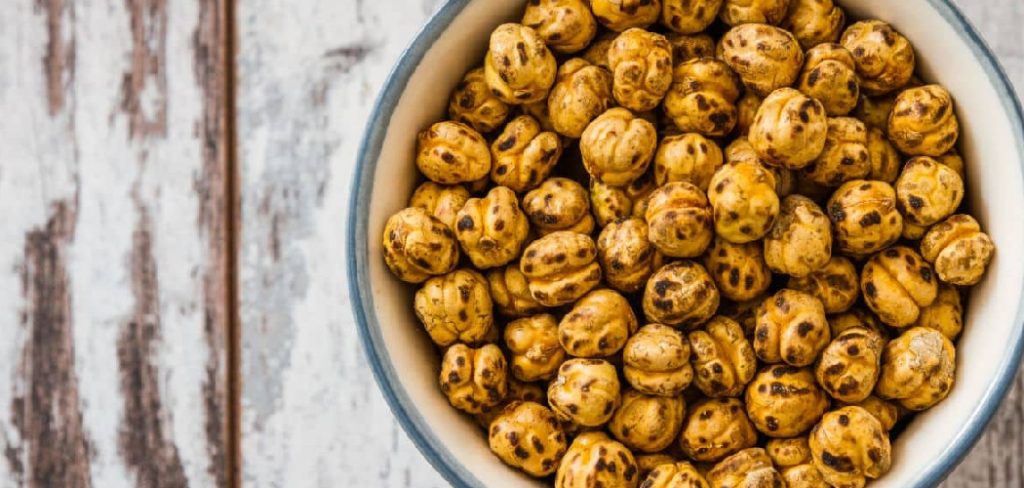
Why is Proper Storage Important?
Proper storage of chickpeas is crucial for several reasons:
Safety
Chickpeas are a type of legume and, like most legumes, can contain harmful bacteria such as E. coli or Salmonella. These bacteria can cause food poisoning if ingested. Storing chickpeas correctly reduces the risk of bacterial growth and contamination.
Freshness and Flavor
Improperly stored chickpeas can become stale, lose their flavor, or develop a rancid taste. This is especially true for dried chickpeas, which can absorb odors from other foods if not stored correctly.
Nutritional Value
Chickpeas are packed with nutrients such as protein, fiber, and essential vitamins and minerals. However, improper storage can lead to nutrient loss over time. Therefore, storing chickpeas correctly ensures they retain their nutritional value.
Needed Materials
The materials needed to store chickpeas depend on the storage method. Here are some of the essential items you may need:
Storage Containers:
For dried chickpeas, you will need airtight containers such as glass jars or plastic bags. For canned chickpeas, the can itself acts as a storage container.
Labels and Markers
Properly labeling your storage containers with the date of purchase or expiry can help you keep track of their freshness.
Cool, Dark Place
Chickpeas should be stored in a cool, dark place away from direct sunlight and heat sources. A pantry or cupboard is an ideal location for storing dried chickpeas.
8 Step-by-step Guidelines on How to Store Chickpeas
Step 1: Sort and Clean
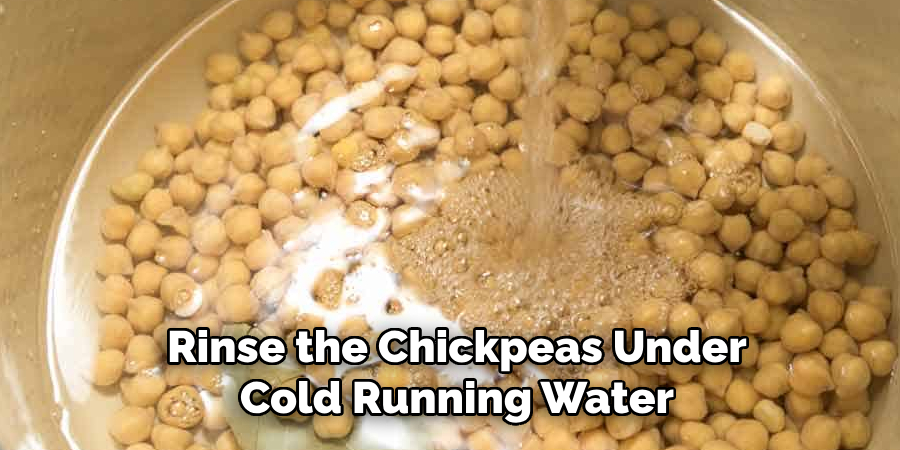
Before storing dried chickpeas, it is crucial to sort and clean them thoroughly. Begin by spreading the chickpeas on a flat surface, such as a tray or countertop, and inspect them for any damaged, discolored, or shriveled pieces. Remove any debris, such as small stones or plant material, that might have been mixed in.
Once sorted, rinse the chickpeas under cold running water to remove any dust or dirt. Allow them to dry completely before moving on to the next storage step to prevent moisture buildup, which could lead to spoilage.
Step 2: Choose the Right Container
Selecting an appropriate container is crucial for maintaining the quality of your chickpeas. For dried chickpeas, opt for airtight containers like glass jars or BPA-free plastic containers with tight-fitting lids. These containers help prevent exposure to air and moisture, which can cause the chickpeas to deteriorate.
Alternatively, high-quality resealable plastic bags with a strong seal can also be used—just be sure they are designed for food storage. For extra protection, consider using vacuum-sealed bags to remove air completely. Make sure the container is clean and dry before transferring the chickpeas to avoid contamination or mold growth.
Step 3: Label and Date the Container
Labeling your containers is an essential step for keeping track of how long your chickpeas have been stored. Write the purchase or expiry date on a label or directly on the container using a permanent marker. This will help you use up older chickpeas first to maintain freshness and prevent food waste.
The shelf life of dried chickpeas depends on several factors, such as the storage conditions and whether they have been previously opened. Generally, they can last for up to 12 months if stored correctly.
Step 4: Store in a Cool and Dark Place
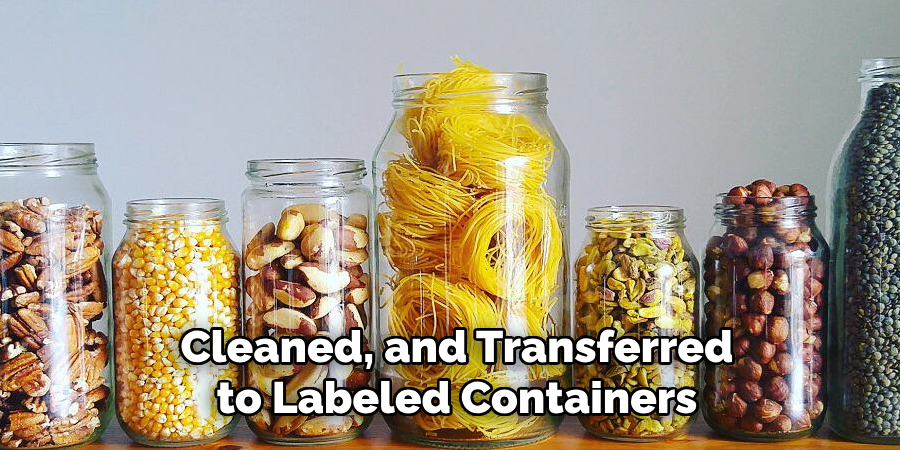
Once your chickpeas are sorted, cleaned, and transferred to labeled containers, it is time to select the appropriate storage location. A pantry, cupboard, or any cool and dark place in your kitchen is ideal for storing dried chickpeas.
Ensure the area is free from excessive heat, moisture, and direct sunlight, as these factors can accelerate spoilage and degrade the quality of the chickpeas. Maintaining a consistent temperature below 70°F (21°C) is best for prolonging shelf life. Proper placement of your chickpeas in such conditions will help preserve their flavor, texture, and nutritional value for an extended period.
Step 5: Store Cooked Chickpeas in the Refrigerator
If you have cooked chickpeas, they should be stored in the refrigerator to prevent bacterial growth. Allow them to cool completely before transferring them to an airtight container or resealable bag. Be sure to label and date the container as well.
Cooked chickpeas can last for up to five days if stored correctly in the refrigerator. If you are not planning on using them within that time frame, consider freezing them instead.
Step 6: Freeze Dried Chickpeas
For long-term storage of dried chickpeas, freezing is the best option. Freezing halts the growth of bacteria and slows down the deterioration process, preserving the chickpeas’ quality for up to 12 months.
To freeze-dried chickpeas, place them in an airtight container or resealable plastic bag. Be sure to squeeze out as much air as possible before sealing the container or bag. Label and date the package and store it in the freezer.
Step 7: Store Canned Chickpeas Safely
Canned chickpeas have a longer shelf life compared to dried chickpeas but still require proper storage. Unopened cans can be stored in a cool, dark place such as your pantry, for up to two years past the expiration date.
Once opened, canned chickpeas should be stored in the refrigerator in an airtight container or covered with plastic wrap. They can last for up to four days if stored correctly.
Step 8: Check and Rotate Stock Regularly
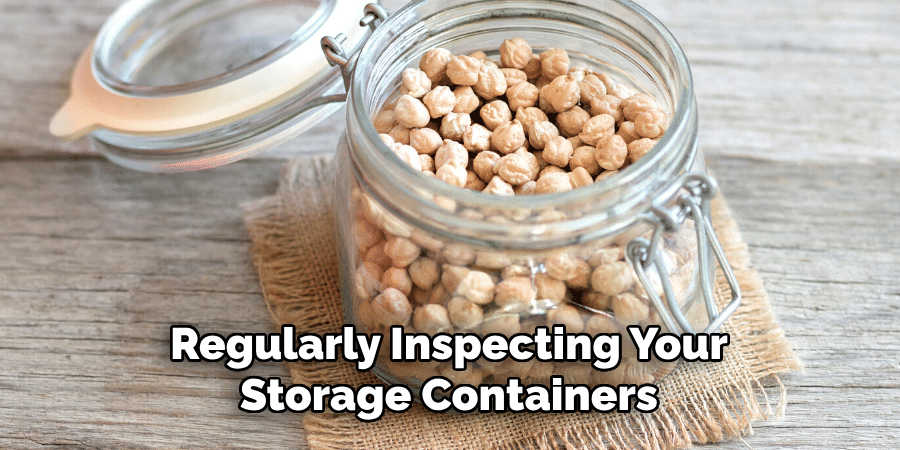
It is essential to check your chickpea stock regularly and rotate them as needed. This means using older chickpeas first and replacing them with newer ones at the back of the storage area.
Regularly inspecting your storage containers for any signs of damage, pests, or spoilage is crucial for maintaining food safety and quality. If you notice any issues, discard the affected chickpeas immediately.
Following these guidelines on how to store chickpeas will help you store your chickpeas properly and ensure they maintain their freshness, flavor, and nutritional value for an extended period. Remember to always use proper storage containers, label and date them correctly and regularly inspect your stock to prevent food waste. With these tips in mind, you can enjoy delicious and nutritious chickpeas whenever you desire!
How Much Will It Cost?
The cost of chickpeas varies depending on factors such as type (dried or canned), brand, quantity, and location. Generally, dried chickpeas are more cost-effective than canned ones, as they require soaking and cooking but offer a larger yield per package. On average, a bag of dried chickpeas costs between $1 to $3 per pound, making it an economical choice for bulk cooking or meal preparation.
Canned chickpeas, while more convenient, are slightly more expensive, typically ranging from $0.75 to $1.50 per can, depending on the brand and store. Organic or premium brands often come at a higher price point, but generic or store-brand varieties are usually more affordable. For those looking to save, purchasing chickpeas in bulk or during sales is a great way to reduce expenses.
By choosing the right type and buying strategically, you can incorporate chickpeas into your meals without breaking the bank, ensuring both nutritional value and affordability.
Frequently Asked Questions
Q: Can I Store Chickpeas in the Pantry?
A: Yes, dried chickpeas can be stored in a cool and dark place like your pantry as long as they are properly sorted, cleaned, and placed in an airtight container. However, it is recommended to use them within 12 months for optimal freshness and quality.
Q: Can I Store Canned Chickpeas in the Pantry after Opening?
A: Once opened, canned chickpeas should be stored in the refrigerator to prevent bacterial growth. It is not recommended to store opened cans in the pantry as they can spoil quickly without proper refrigeration.
Q: Do I Need to Rinse Dried Chickpeas Before Cooking?
A: Yes, it is essential to rinse dried chickpeas before cooking them. Soaking and rinsing help remove any dirt or debris that may have accumulated during storage and iimprovetheir texture when cooked.
Q: Can I Freeze Cooked Chickpeas?
A: Yes, cooked chickpeas can be frozen for up to six months. Be sure to label and date the ccontainersbefore placing them in the freezer.
Q: How Long Do Chickpeas Last in the Freezer?
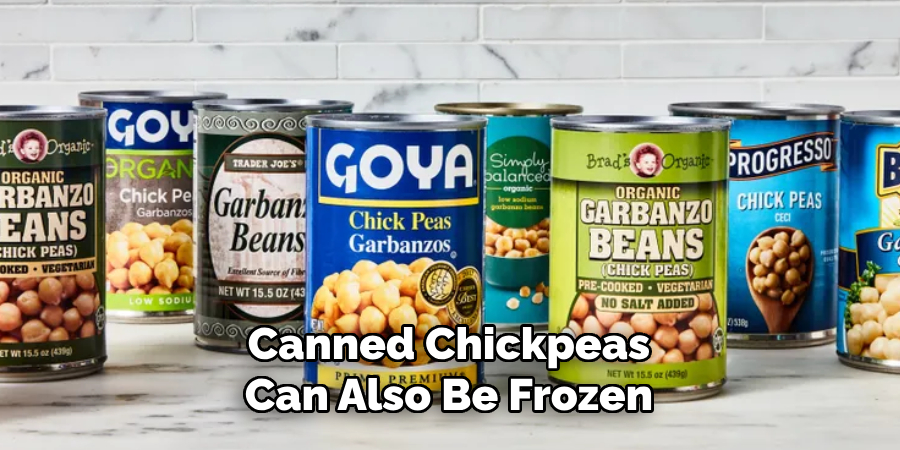
A: Properly stored, dried chickpeas can last for up to 12 months in the freezer. Canned chickpeas can also be frozen but may experience a change in texture after thawing. It is recommended that they be used within three months of freezing for best results.
Conclusion
Proper storage of chickpeas is essential to maintain their quality, flavor, and nutritional value over time. By following the outlined steps on how to store chickpeas, you can ensure both dried and cooked chickpeas remain fresh and ready for use in a variety of dishes.
Whether you are storing them in airtight containers in a pantry, refrigerating cooked chickpeas, or freezing them for long-term use, taking the time to store them correctly will prevent spoilage and food waste. Regularly checking and rotating your stock will further extend their usability and ensure a steady supply of this versatile legume in your kitchen.
Professional Focus
Angela Ervin, a former interior designer turned blogger, specializes in kitchen design and renovations. Through her website, she blends her passion for cooking with design expertise, sharing practical and creative ideas. Known for balancing functionality and beauty, Angela’s insightful content has made her a trusted voice in home design and lifestyle.
About the Author
Angela Ervin, an experienced interior designer and blogger, combines her passion for kitchen renovations with storytelling. Living in Petersburg with her family, she enjoys cooking and testing her projects firsthand. Known for her humor and relatable style, Angela shares creative, functional design insights through her content, making her a trusted voice in home design.
Education History
University: Virginia Commonwealth University
Degree: Bachelor of Fine Arts (BFA) in Interior Design
- Angela’s education at VCU focused on mastering core interior design principles, including spatial planning, color theory, materials selection, and sustainable design practices.
- She gained hands-on experience through studio projects and collaborative design exercises, which honed her ability to create functional and aesthetically pleasing environments.
- Her coursework also emphasized problem-solving and practical applications of design, preparing her for real-world projects like her self-directed kitchen renovations.
- The program’s strong foundation in both technical skills and creative expression shaped Angela’s ability to seamlessly integrate form and function in her work.


